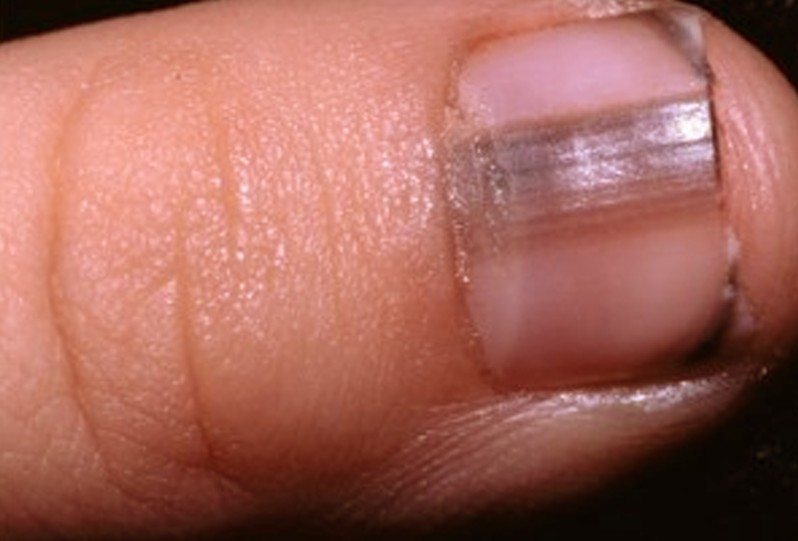Everybody looks down at their toenails and if one is black, the first thing they think of is toenail fungus – not melanoma under the nail. The important thing to know is that not all black toenails are fungal toenails, and sometimes a black toenail means a malignant melanoma.
The problem is that if you choose to treat your problem as a fungal toenail and you are wrong, then you are giving the melanoma a chance to spread – which is the absolute last thing you want to do.
What exactly is melanoma under the nail?
Melanoma is a type of skin cancer. It can appear anywhere, but when melanoma is under the toenail, it is frequently mistaken for something else.
Melanoma under the toenail is not nearly as common as a fungal toenail, which is why it is so often overlooked. If ignored, it can become deadly.
Bob Marley, a famous reggae musician, died from a melanoma under the toenail that was not treated before it spread.
What does melanoma under a toenail look like?
Melanoma under the toenail looks very much like a fungal toenail. The nail can be thickened, discolored, and deformed – just like a fungal toenail. Sometimes melanoma under the nail has black streaks, or even digs in just like an ingrown toenail.

More photos, which look even more like fungal toenails, can be found here.
How do you diagnose melanoma under the toenail?
A sample of the toenail and nail bed should be sent to a pathology laboratory for analysis. This is a simple procedure that is usually performed in the office. I personally prefer sending the nail samples to a laboratory that has a lot of experience in diagnosing melanoma under the toenail, to make sure the melanoma is not misdiagnosed. Results usually come back within a week or two.
Treatment of Melanoma under the toenail
Melanoma should be removed. The exact treatment will depend on the depth of the melanoma (also known as the stage). Usually a margin of healthy tissue is removed to make sure the entire melanoma is removed. If the melanoma is not caught early enough, the toe may need to be amputated.
If notice any changes in your toenails, call 845-298-9074 to set up an appointment at Hollowbrook Foot Specialists. Be sure not to assume you have a fungal toenail and do not treat the problem yourself. Your best bet is to see an board certified expert in Podiatric Medicine and Foot Surgery, such as Dr. David Schlam.


